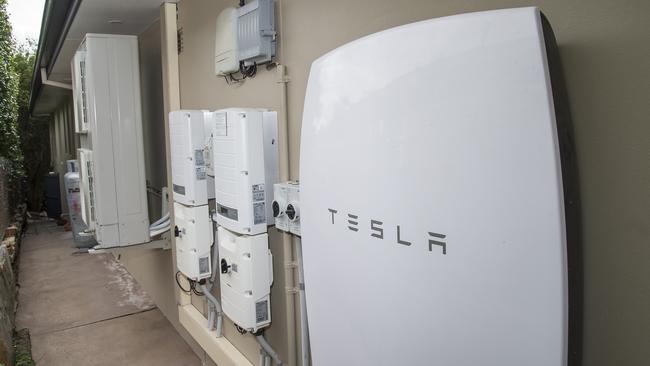Boost for batteries under power system reforms
The Australian Energy Market Commission has announced two steps to boost the role of batteries in the country’s power grid.

Australian households with batteries will be able to earn extra income under a proposal laid out by the national electricity rule-maker, while cost and logistics hurdles have been cut for the nation’s big battery operators.
The Australian Energy Market Commission has announced two steps to boost the role of batteries in the country’s power grid, reflecting an expected stronger take-up of batteries in Australian homes and its decision to financially reward ultra-fast storage providers for reacting at short notice when the system needs to avoid blackouts.
A draft energy plan provides streamlined rules for anyone who provides storage options for the grid. At a commercial level, big batteries will no longer need to register twice, as required at present, to both draw energy from the grid and send it out, while households owning batteries can sign up with aggregator businesses who will pay them for using their battery at certain times.
“At the moment, aggregator businesses can only provide energy one way, but our changes will open up new business models for them,” the AEMC said.
“This change works in tandem with our existing proposals on distributed energy resources currently under consideration, which are designed to make home batteries a more attractive way to maximise solar investments.”
A new fast frequency response market will also proceed under a final determination made by the AEMC, recognising the integral role played by batteries in stabilising the grid.
The cost of lithium-ion batteries has tumbled globally by nearly 80 per cent per megawatt hour since 2010 and are expected to fall further as electric vehicle manufacturing expands this decade.
Keeping the power grid in a safe operating range – a service known as frequency ancillary control services – has been limited to six seconds for big battery operators.
The rule change by the AEMC would reduce this to a few seconds with the provision of faster response capacity cutting the cost of procuring grid management services, ultimately lowering bills for consumers.
“This is the first of the new system services markets we are designing to deliver essential security services the system needs as the energy sector decarbonises,” the AEMC said. “This new market provides a new income stream for batteries, aggregator and hybrid businesses and other fast responders like solar, wind or those offering demand management services able to react within a lightning speed of one to two seconds to stabilise system frequency so the lights stay on.”
The fast frequency response market has been brought forward to October 2023 while the draft energy storage plan is to be determined in October this year.
The move follows a new goal for Australia to run the electricity grid entirely from solar and wind generation by 2025, a target that would allow the system to be run entirely on renewables at peak times although sources such as coal and gas would remain a big part of the day-to-day energy mix.




To join the conversation, please log in. Don't have an account? Register
Join the conversation, you are commenting as Logout